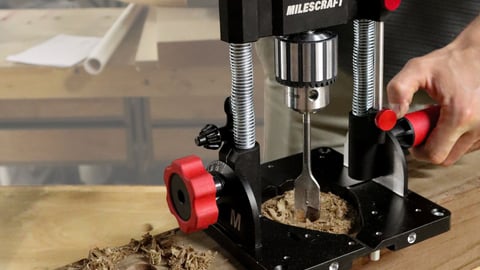The birth of a new Craftsman
Sears Holdings earlier this month announced a plan to sell its Craftsman brand to Stanley Black & Decker for a price tag that — after all is said and done — adds up to about $900 million. Here are some of the details:
What is Stanley getting exactly?
Stanley bought the Craftsman brand rights. That gives the tool company the ability to develop, manufacture and sell Craftsman branded products in stores outside of the Sears channels — Sears stores and Kmart, mainly.
What sales do Craftsman products generate currently?
About $1.9 billion in annual sales — 35% in tools, 25% in storage and related and 40% in lawn and garden. Only 10% of those sales are non-Sears — coming mostly through Ace Hardware and Orchard Supply Hardware.
What is the plan?
Stanley Black & Decker CEO Jim Loree described it thus: “We believe this is an excellent opportunity to invest in, re-Americanize and revitalize this legendary brand; ramp up product innovation; and broaden its distribution — making Craftsman products more readily available to consumers and growing the overall tool market.”
What are the terms of the deal?
Two fixed-cash payments. The first is an up-front payment of $525 million. The second is a $250 million cash payment after three years. Plus, annual payments to Sears of about 3% of new sales, bringing the total to about $900 million.
Will Sears continue to sell Craftsman?
Yes. Under the deal, Sears is granted a license to continue selling Craftsman in its stores, royalty free for 15 years. And then 3% of sales after 15 years.
Is this the biggest tool deal ever?
No. While it does involve some of the biggest names in tools, it’s not even the biggest deal that’s currently in the works for Stanley. That distinction belongs to a deal to acquire the Newell Brands tool business for $1.95 billion, bringing Irwin and Lenox into the Stanley family. Announced in October, that deal is expected to close in the first half of 2017. The Stanley Works acquisition of Black & Decker back in 2009 was a $4.5 billion deal.
Through what channels will Craftsman begin to flow?
Loree plans to expand the brand through retail, industrial, online and mobile channels. He said interest is “very high” from several major U.S. retailers. Loree said: “We see growth on the retail side coming from expanded distribution to big box stores, where the Craftsman brand has never before been available.”
Who doesn’t like this deal?
Independent Ace Hardware stores and the California-based Orchard Supply Hardware chain have been able to promote Craftsman for years as an in-store differentiator. Orchard Supply enjoyed the relationship because of its connection to Sears (of which it was once a division), and Ace because of a special agreement brokered between the two companies about five years ago. If the deal goes through, those arrangements will lose their semi-exclusive gloss.
Can a non-Sears business person such as Loree appreciate the value of the Craftsman brand?
Loree described Craftsman as an iconic brand, one with “tremendous consumer awareness, purchase intention and loyalty.” Here’s how Loree reflects on his earliest memories with the brand: “I can vividly remember spending hours flipping through dog-eared Sears catalogs in the 1960s and 1970s, marveling at the scope and the good value of Craftsman tools, the majority of which were American made.”
Where will Stanley make Craftsman tools?
At first, the same place where they’re currently made — sourced from overseas. But after a short-term transition, the plan calls for increasing its manufacturing capacity in the United States to achieve growth with the brand. Stanley points to a philosophy of making products where they are sold wherever possible. “We know our end-users generally like to buy products made in their own countries, especially professionals in the trades,” Loree said. He added that Stanley has increased its U.S. tools manufacturing employment by 40% over the past three years.




